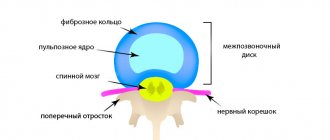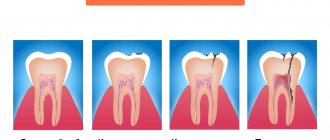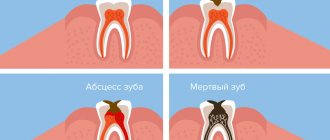Periostitis of the jaw (flux) refers to dental diseases. The localization of the source of inflammation occurs in the periosteum. A subperiosteal abscess is formed, and the peri-maxillary soft tissues swell. A person experiences painful sensations radiating to the temporal region, ear, eye; his health worsens: weakness, sleep disturbances, fever, and headaches occur.
Periostitis, aka gumboil
The disease is diagnosed by inspection and palpation; an x-ray is required for confirmation. The doctor opens and drains the subperiosteal abscess and removes the tooth that is the source of infection. After this, the patient must undergo a course of physiotherapy and antibiotic treatment. It is also necessary to rinse your mouth regularly.
What kind of diagnosis is this? According to the international classification ICD-10, accepted throughout the world, periostitis of the lower jaw is assigned code K10.2.
Reasons for the development of periostitis
The causes of periostitis of the jaw are usually infection or injury. According to statistics, in practice this disease is observed in 5.4% of patients with inflammation in the face and jaw. Moreover, 95% of patients have an acute form, 5% have a chronic form. Localization of periostitis is observed one and a half to two times more often in the lower jaw. The clinical picture, both local and general, is peculiar. If the treatment process is started on time, it will end successfully, otherwise the disease progresses, which carries a high probability of severe purulent complications.
Why does this disease occur? There are several reasons. And the main one is complicated caries, in which pathogenic microflora penetrate through microchannels into the tooth cavity and then spread to the tissue surrounding the root.
Often periostitis is caused by chronic apical periodontitis. Diseased microorganisms move further and further through the channels over time. If the disease is not treated, the soft tissues are first affected, then the periosteum.
Staphylococcus always lives in the oral cavity. If the immune system is weakened, the population begins to grow and the periosteum becomes inflamed.
The hematogenous and lymphogenous form is usually caused by ENT diseases, ARVI, and infectious diseases such as measles and scarlet fever. Traumatic periostitis may occur after tooth extraction or trauma, surgical intervention, jaw fractures, infected wounds on the face, etc.
In many patients, periostitis is caused by previous hypothermia or overheating, as well as emotional or physical overload.
There are other reasons, less common: tuberculosis and other diseases that are fraught with complications spreading to the jaw periosteum.
The etiology and pathogenesis of periostitis in modern dentistry has been studied quite well. Treatment usually does not cause problems.
Causes
As already mentioned, periostitis of the jaw most often occurs as a result of untreated pulpitis or periodontitis. Sometimes the cause can also be a soft tissue injury, a jaw fracture, or if an infection enters the patient’s blood.
Based on the causes of the disease, there are different types of periostitis:
- inflammatory - is a complication of inflammatory diseases of the tooth or periodontium;
- traumatic - occurs as a result of injury or bruise of the jaw and gums;
- toxic - develops as a result of infection entering the patient’s blood against the background of progressive general diseases of the body;
- rheumatic;
- allergic;
- specific - accompanies such serious diseases as tuberculosis, actinomycosis and some others.
Types and stages of disease development
The classification of odontogenic periostitis depends on the phase of the disease and the nature of its course. In addition to examination and palpation, the dentist prescribes an X-ray examination. The resulting image allows you to assess the condition of the roots and periapical areas. The image does not show thickening of the periosteum in the first three days from the onset of the disease.
- Various types of periostitis are classified according to the international classification ICD 10 depending on the route of infection into the periosteal tissue:
- acute odontogenic periostitis of the jaws (cause - diseased tooth);
- hematogenous (infection enters through the blood);
- lymphogenous (spread through the lymph system);
- traumatic (for injuries of the periosteum).
According to the course and pathomorphology, the disease is divided into two forms: acute and chronic.
In the acute form, the symptoms are pronounced. There is swelling of half the face, he is tormented by severe throbbing pain, and pus forms. The acute serous form is characterized by such clinical manifestations as infiltration in the periosteum, serous exudate is formed in the lesion. In acute purulent periostitis of the jaw (popularly called gumboil), a limited subperiosteal focus of inflammation is formed, fistulous tracts are formed, and pus comes out through them. The course of purulent periostitis is much more severe, with bursting pain that increases when drinking hot foods. If a fistula tract does not form, the dentist cuts the periosteum to allow the pus to escape.
The course of the chronic process is sluggish, stages of exacerbation occur periodically. Young bone tissue begins to grow on the surface of the jaw. With the development of the ossifying form, ossification and hyperostosis occur quite quickly. There are two degrees of spread of this process: limited (covering one to three teeth) and diffuse purulent (almost the entire jaw is covered).
If the wisdom tooth erupts with difficulty, retromolar periostitis may develop in the lower jaw. The pus does not come out on its own due to anatomical features, which requires dissection.
Types of periostitis of the jaw
The disease is classified according to various criteria. Depending on the clinical course and rate of progression, periostitis of the jaw can be chronic or acute.
The chronic form is quite rare. As a rule, it develops against a background of weakened immunity. It manifests itself as vaguely expressed symptoms of an infectious-inflammatory process, so problems with its diagnosis may arise.
Periostitis of the lower jaw is especially difficult to detect. With a certain location of the focus, the symptoms are similar to those of an abscess of the sublingual region or inflammation of the salivary gland. Chronic pathology leads to the proliferation of periosteal tissue.
The consequences can be irreversible if simple dental periostitis (small infiltrate on the surface of the bone) degenerates into chronic ossification, affecting the inner and outer layers of the periosteum. This leads to rapid ossification of new tissue and hyperostosis.
Acute bone periostitis is accompanied by purulent or serous discharge. It can spread to one or several teeth, involving the entire jaw in the inflammatory process. A mature abscess forms fistulas through which pus seeps into the oral cavity. Serous fluid is localized in the infiltrated tissues of the periosteum. According to statistics, the diagnosis of periostitis of the jaw is relevant for 7 percent of patients in dental clinics. Almost 95 percent of them go to the doctor with an acute form of the disease, which is popularly called gumboil. This is an infectious inflammation that can be provoked by various pathogens: gram-negative and gram-positive bacilli, staphylococci, streptococci, putrefactive bacteria. Odontogenic periostitis begins in the periosteum (periosteum) - the connective tissue covering the bone from the outside. A subperiosteal abscess forms. As a rule, it is localized in the periosteum of the jaw body or alveolar process. Purulent discharge first accumulates under the periosteum, then its volume increases due to the involvement of soft tissues of the oral cavity and lymph nodes in the pathological process.
Characteristic symptoms
Symptoms of acute periostitis of the jaw are determined by the form of the disease. The state of the patient’s immune system and the diseases he has are also influenced. But there are also characteristic signs that make it possible to make an accurate diagnosis.
The disease develops gradually. At first, the gums swell a little, and pressing on the tooth causes pain. Having discovered such signs, the patient should visit a doctor on the same day, otherwise the cheek may become swollen by the morning.
Signs of the form of the disease with serous infiltrate are:
- red color of the mucous membrane:
- the appearance of painful swelling in the fold between the gum and cheek;
- tolerable pain;
- temperature may rise to 37°C;
- facial asymmetry;
- submandibular and postauricular lymph nodes enlarge (lymphadenitis).
With a purulent infection, the condition becomes much worse:
- signs of intoxication and pain are observed;
- temperature (up to 38°C);
- the cheek becomes swollen;
- pain radiates along the trigeminal nerve;
- pulsation is felt in the swollen part;
- a fistula may occur;
- When you press in the area between the cheek and gum, you can feel the vibrations of the fluid.
Symptoms of the disease
Signs of pathology largely depend on the individual characteristics of the patient’s body, however, there are general symptoms that indicate the appearance of gumboil:
- a lump on the mucous membrane, which has different sizes - up to several cm in diameter and even in height,
- formation of an abscess and fistula if there is purulent inflammation,
- sharp pain that can radiate to the ear, eyes or temples,
- swelling of the gums and parts of the face,
- enlarged lymph nodes in the neck and under the jaw,
- fever up to 38 degrees, general weakness and poor health.
In some cases, a fistula opening appears on the abscess itself, through which purulent masses will enter the oral cavity. In this case, the pain becomes less pronounced, the patient’s condition improves, because there is an outflow of pus and a decrease in the inflammatory process. However, this does not mean at all that a complete cure has occurred - the pus will not be able to come out completely on its own. Drug therapy and surgical intervention are still required, i.e. specialist help.
How is periostitis diagnosed?
For an accurate diagnosis, the doctor collects anamnesis, conducts an external and internal examination, prescribes an x-ray and examines the x-ray. Since the symptoms of some dental problems are identical, the surgeon must have a good understanding of their symptoms.
When conducting diagnostics, doctors look for similarities and differences between chronic periostitis of the jaw or acute and other diseases of the oral cavity. An x-ray helps differentiate the disease from others (apical periodontitis, phlegmon, abscess, inflammation of the salivary gland, osteomyelitis).
Apical periodontitis is characterized by the presence of a purulent focus located at the top of the root.
Cellulitis and abscess are manifested by external changes on the skin. An infiltrate appears on the affected area, the skin over it turns red and becomes shiny.
With sialadenitis, it is necessary to palpate the salivary gland to determine its density. Osteomyelitis is diagnosed by X-ray - in the early stage of the disease, it shows decaying bones, in the late stage - formed sequesters.
Symptoms
At first, the symptoms of periostitis may not attract attention, and the disease may develop inconspicuously. If a tooth is affected by caries, then over time the inflammatory process affects the pulp. Then the pus gets under the periosteum and provokes the development of an inflammatory disease. At this stage, the symptoms of the disease become so acute that they can no longer be ignored.
Main symptoms:
- swelling of the gums in the area of the tooth affected by the disease, initially painless, over time the pain intensifies;
- formation of an abscess under the periosteum;
- swelling of the soft tissues of the lips and cheeks, which extends to the submandibular or infraorbital areas;
- acute pain radiating to the temples, ears, eyes;
- increase in body temperature.
Stages of the operation
When treating periostitis of the jaw, the surgeon must cleanse the cavity of pus so that the process does not spread deeper. To do this, he cuts the periosteum. The operation consists of several stages:
- Anesthesia . The affected area is numbed using modern drugs.
- Periostotomy . The surgeon makes a soft tissue incision along the fold between the gum and cheek, capturing the periosteum. This ensures the release of purulent exudate to improve the patient’s condition.
- Wound drainage . A rubber or gauze graduate is installed into the incision. This ensures the drainage of pus.
After opening the purulent lesion, the surgeon asks the patient to rinse his mouth with a disinfectant solution.
After this, chlorhexidine and similar solutions are used to wash the wound. Measures such as irrigation with dimexide with oxacillin and 15-minute applications of dimexide liniment are also effective.
After examining an x-ray of the tooth that caused periostitis, the doctor decides whether it can be preserved and treated in the future to eliminate the source of infection, or whether tooth extraction is necessary.
Treatment methods
In folk medicine, there is an opinion that a lump on the gum, i.e. flux, needs to be treated with hot compresses. However, this is strictly prohibited, especially in the presence of purulent inflammation, since when heated, the pus very quickly spreads along with the bloodstream throughout the body, which is fraught with inflammation of absolutely any organs, incl. brain. When treating flux, it is necessary to open the lump and install drainage for the outflow of pus, and prescribe drug therapy. The entire process of complete rehabilitation may take several weeks.
Opening a purulent abscess Treatment of flux is carried out as follows: a small incision is made on the gum, where drainage is installed - a thin tube that connects the oral cavity and the purulent focus. An outflow of pus occurs through it for some time, and at the same time a course of antibiotic therapy is prescribed. Canal treatment is also carried out, and after complete healing, the shape and functionality of the tooth is restored.
Price:
4000 rubles more details about the solution
Treatment of dental canals Periostitis, as a rule, occurs due to the presence of inflammation inside the tooth or in the periodontal tissues. Therefore, root canal treatment may be required for complete rehabilitation. To do this, the cavity is opened, thoroughly cleaned of inflammation, and if necessary, a drug is placed inside the root system to affect the periodontal tissues, i.e. to the site of inflammation. After which the canals are filled and the coronal part is restored.
Price:
from 4,500 rubles more about the solution
Tooth extraction Extraction may be required in the presence of an advanced disease, when neither opening the abscess nor drug therapy will help to fully restore the tissue and save the tooth. It is removed, the hole is thoroughly sanitized and the purulent focus is removed. At the same time, medications are prescribed to reduce the inflammatory process and quickly rehabilitate the body.
Price:
from 1500 rubles more about the solution
Surgical intervention
With serous inflammation, as a rule, conservative therapy is limited. Pulpitis or periodontitis is treated, the patient is prescribed a course of physiotherapeutic sessions (UHF), rinsing with disinfectants. This leads to resorption of the infiltrate.
The acute purulent form requires surgical intervention to open the subperiosteal or submucosal abscess.
The milk tooth that caused periostitis must be removed. Severely damaged permanent teeth are also removed. Teeth that are capable of performing their functions need to be treated.
Drug treatment
The second stage of treatment after surgery is drug therapy. The patient is washed with modern antiseptic compounds (Chlorhexidine, Ethacridine, Dimexide with Oxacillin), and sterile bandages are applied. To impregnate them, use a disinfectant solution or ointment. Antibiotics (Oletetrin, Oxacillin, Lincomycin) must be prescribed to prevent complications and relapses. Nitrofurans (Furadonin), sulfonamides, painkillers, antihistamines (Suprastin) may be prescribed; vitamins. In the period after the operation, the patient must follow a gentle diet and rinse with antiseptics.
Treatment of periostitis in dentistry in Moscow
Periostitis is a concomitant phenomenon of dental pathologies. But sometimes patients are not even aware of a dangerous disease in the oral cavity. For example, the need for serious dental treatment for periostitis of the upper jaw often turns out to be an unpleasant surprise due to the hidden development of the pathological process.
Modern dentistry in Moscow is guaranteed to prevent such phenomena. Highly qualified specialists have unique diagnostic and treatment equipment at their disposal. If treatment of periostitis is necessary, all possible methods are used to achieve one hundred percent recovery.
Physiotherapy
After surgery, the patient is recommended to undergo a course of physiotherapy to stop the inflammatory process, solux lamp, ultrasound. These are procedures such as: UHF, fluctuarization, microwave, laser, electrophoresis. Usually 5 to 7 sessions are prescribed.
Is it possible to do without it? Such a serious disease as periostitis of the jaw cannot be cured at home; qualified professional help is needed from a professional who will eliminate the source of infection. You can use folk remedies only in cases where the pain comes on suddenly, and you need to somehow improve the patient’s condition. But you need to visit a doctor as soon as possible. Before this, you can rinse your mouth with soda, salt, a decoction of herbs that have an anti-inflammatory effect, apply cold compresses to reduce swelling and relieve pain.
Complications
- Most often, periostitis causes osteomyelitis.
- Ulcers of soft tissues of the face. The cause of such complications is the spread of purulent infection to other adjacent soft and hard tissues. Since pus spreads very quickly through the soft tissues, the inflammatory process spreads very quickly.
- Sepsis is a general blood infection that, if unfavorable, causes the death of the patient. Therefore, in no case should you self-medicate if there is the slightest suspicion of periostitis. You should immediately seek qualified help, as the disease develops very rapidly.
What to do for prevention
The main preventive measure is to constantly monitor the condition of the oral cavity. Preventive measures include:
- daily hygiene of teeth and gums;
- visiting the dentist twice a year;
- use of professional hygiene procedures, removal of tartar;
- timely treatment of caries and other pathologies;
- If you have problem gums, you need to be systematically treated by a periodontist.
To prevent periosteal disease, doctors recommend having an x-ray every year.
Periostitis of the jaw often develops even in children.
If you notice swelling on the face of a child complaining of pain, immediately take him to the dental clinic. Self-medication is unacceptable! Taking some medications may disrupt the picture of the disease, which will complicate the diagnosis and may result in serious complications. Moscow metro station Zvezdnaya, Danube Avenue, 23
Periostitis of the lower and upper jaws
A purulent-inflammatory process can develop in the lower or upper jaw. Most often, bone periostitis becomes a consequence of:
- diseases of the teeth and gum tissue (periodontitis, pulpitis, alveolitis, problems with the eruption of third molars, periodontitis, cysts);
- unsatisfactory condition of the oral cavity, untreated teeth;
- injury to the jaw or soft tissues in the facial area;
- penetration of infection from other foci of inflammation in the body through the lymphatic or circulatory system (with sore throat, flu, measles, ARVI, otitis media, scarlet fever).
The risk that any of these factors will provoke periostitis of the upper or lower jaw increases significantly with physical or emotional stress or severe cooling.










